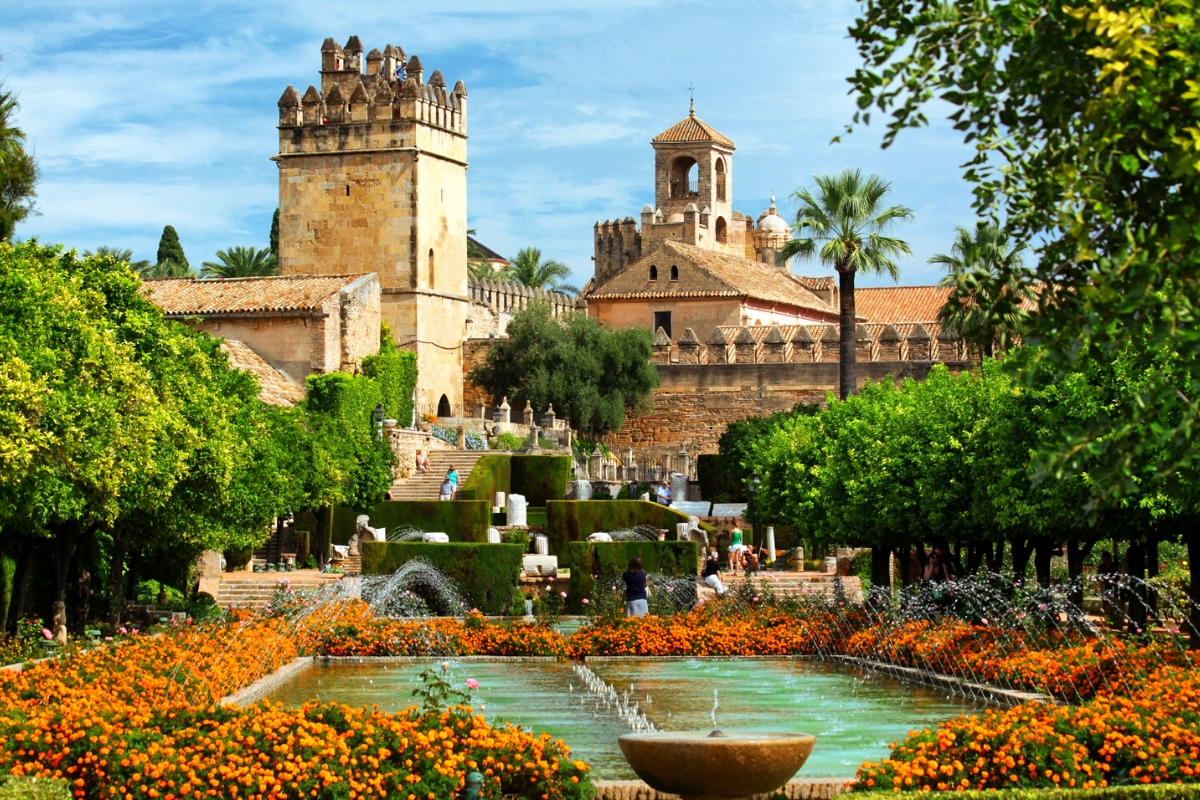Explore the attractions of one of Spain’s largest cities, find out what’s inside the famous La Mezquita, what to see in the Jewish Quarter, when to go to the festival of the most beautifully decorated patios!
How did it become a medieval metropolis?
Imagine Córdoba during the Caliphate: 300 mosques, 300 public baths, 80 hospitals, public libraries, 17 universities… It was a time of flourishing philosophy and science (the Al-Hakam Library had more than 400,000 books!).
The history of present-day Córdoba resembles that of Cadiz, which we wrote about here – it too is a city that has passed from hand to hand over the centuries. The Iberian settlement was conquered by Carthage, the Romans, the Byzantines, the Visigoths and the Moors. As the capital of the Caliphate of Cordoba, it rose to prominence in the Middle Ages as the largest city in the Mediterranean – with a population of almost one million! The city, after the fall of the Caliphate and conquest by Christian kings, gradually lost its importance.

La Mezquita – for us one of the wonders of the world
The interior of this Christian cathedral hides a former… mosque! The Puerta del Perdón gate leads inside, followed by a courtyard filled with the scent of orange trees. The sight of the 856 columns supporting the round white-brick arches is breathtaking! Near Córdoba, it is also worth seeing the remains of the Medina Alcazaba, a city-palace built between 936 and 976. This extraordinary building was filled with more than 4,300 columns, specially imported…. from Constantinople!

Alkazar – the seat of kings
Traces of the city’s long history can still be seen from afar today. One of these is the Alcázar fortress, built and rebuilt by the Arabs and later serving as the seat of Isabella of Castile and Ferdinand of Aragon. It was during their reign that the centuries-long Reconquista, the expulsion of the Arabs from the Iberian Peninsula, ended. Queen Isabella is also known for organising the expeditions of Christopher Columbus. The palace still impresses today with its grandeur – a defensive fortress, with a distinctive Tower of the Inquisition, hides green courtyards, fountains and exotic flowers inside.

An atmospheric district
It is also worth taking a stroll through Córdoba’s former Jewish Quarter. Among the narrow streets and white-painted houses, there are beautiful buildings and charming corners, filled with flowering vegetation. If you want to learn more about the district’s history, head to the Casa de Sefarad, which houses a museum, and the 15th-century mudéjar-style synagogue – which combines elements of Islamic and Christian buildings.
Whose patio is the most beautiful?
If we’re in Cordoba in May, we can’t miss the competition for the most beautiful patio! Some of the interior courtyards are UNESCO-listed, where you can admire not only the beautiful vegetation, but also the architecture, the fountains, the Moorish-style decorations. As you can see, the tradition of luxury real estate in Spain is known in Andalusia not from today. During the Fiesta de los Patios de Córdoba, the city also hosts flamenco shows and concerts.

Enjoy the sun
Cadiz, Córdoba, Malaga – these Andalusian cities attract tourists from all over the world, seeking peace, relaxation and beauty on the Costa del Sol. Many of those coming here for the first time wish to return forever, to the sun, the mild climate, the sea, the proximity of the mountains and other attractions. Looking for a house or flat to buy in Spain? Start your search to the Marbella area, a city made for comfortable living.

